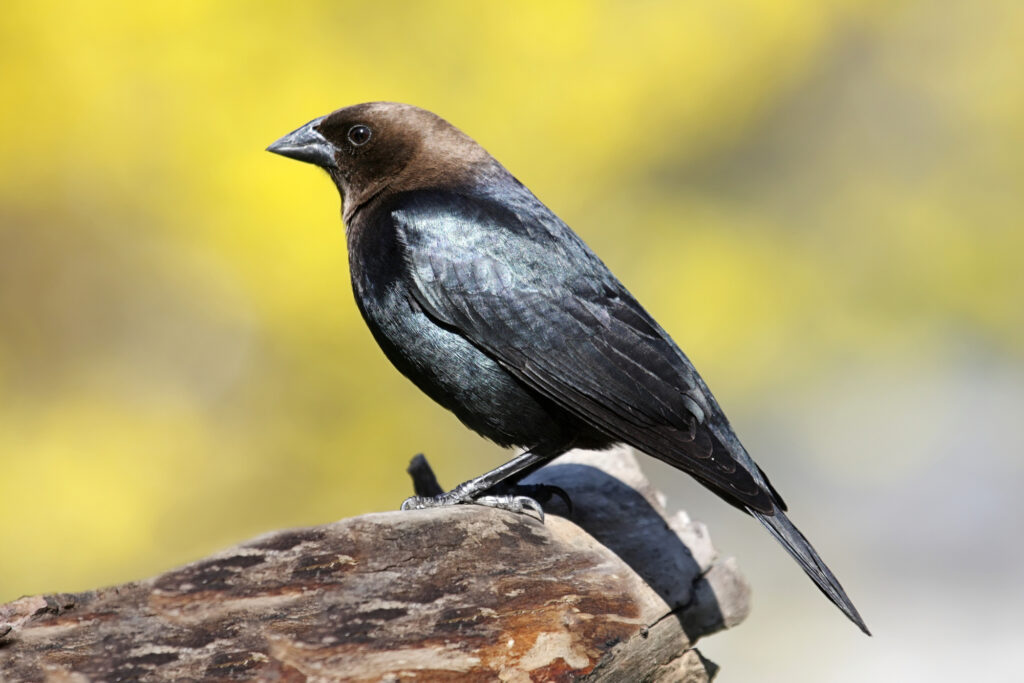Minnesota has numerous bird species to explore. One interesting and often overlooked family is the Icteridae—or the American blackbird family.
These, along with the European blackbird species of the European starling, which has been introduced to the area, don’t always have the best reputation. But it can be intriguing to take a closer look at these interesting birds.
Read on to learn which blackbirds bird watchers can see in Minnesota, and when they might be spotted in this state.
Red-Winged Blackbird
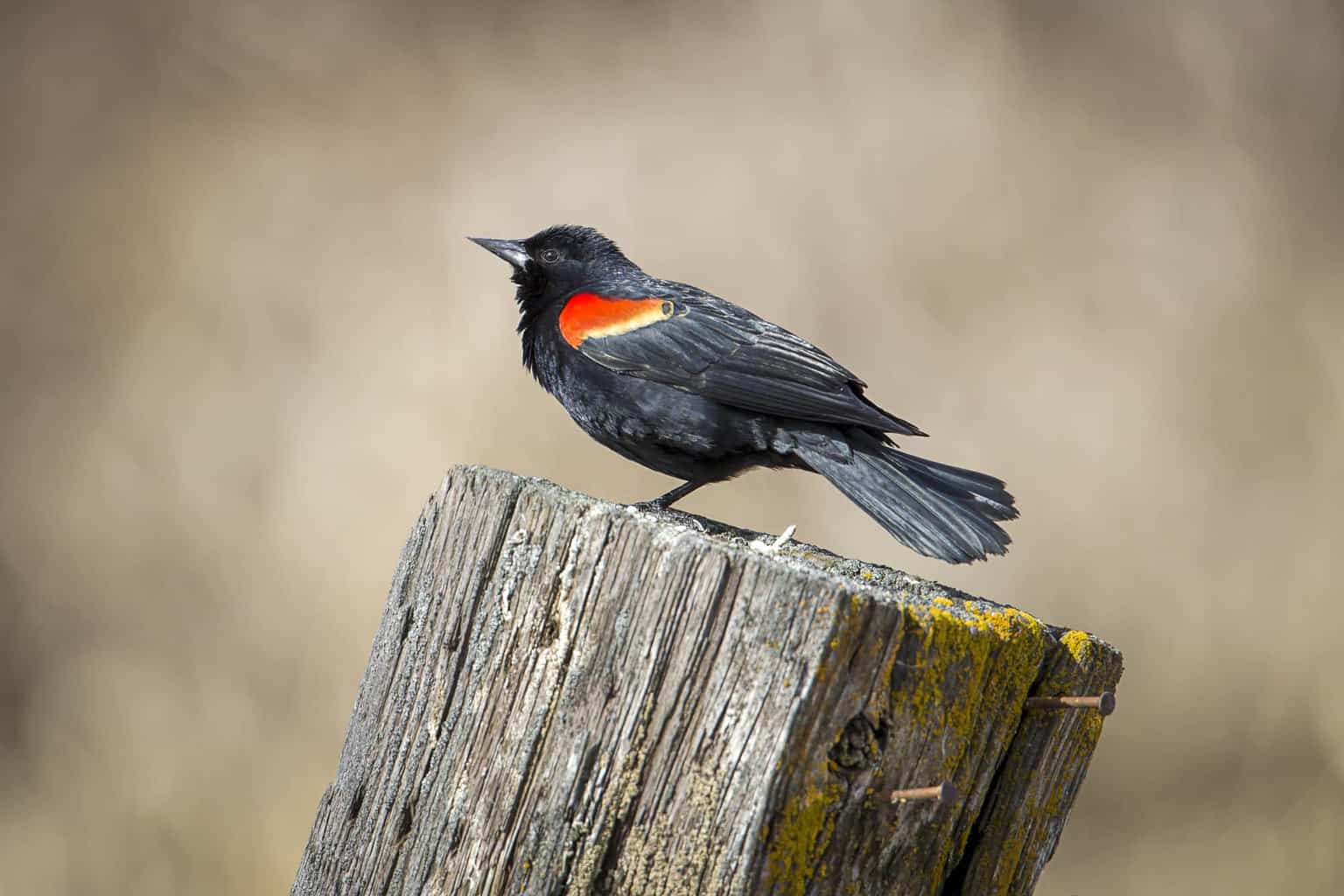
- Scientific Name: Agelaius phoeniceus
- Length: 6.7 – 9.1 in (17 – 23 cm)
- Weight: 1.1 – 2.7 oz (32 – 77 g)
- Wingspan: 12.2 – 15.8 in (31 – 40 cm)
The blackbirds you are most likely to spot in Minnesota are Red-winged blackbirds. You are most likely to see them here over the summer months since most migrate south for the winter.
However, some individuals of this species are known to remain here all year—even during the coldest months.
The males of his common blackbird species are easiest to identify, with their black color and red-orange patches on their wings. The females are rather less distinctive, with plumage of streaky brown.
Common Grackle
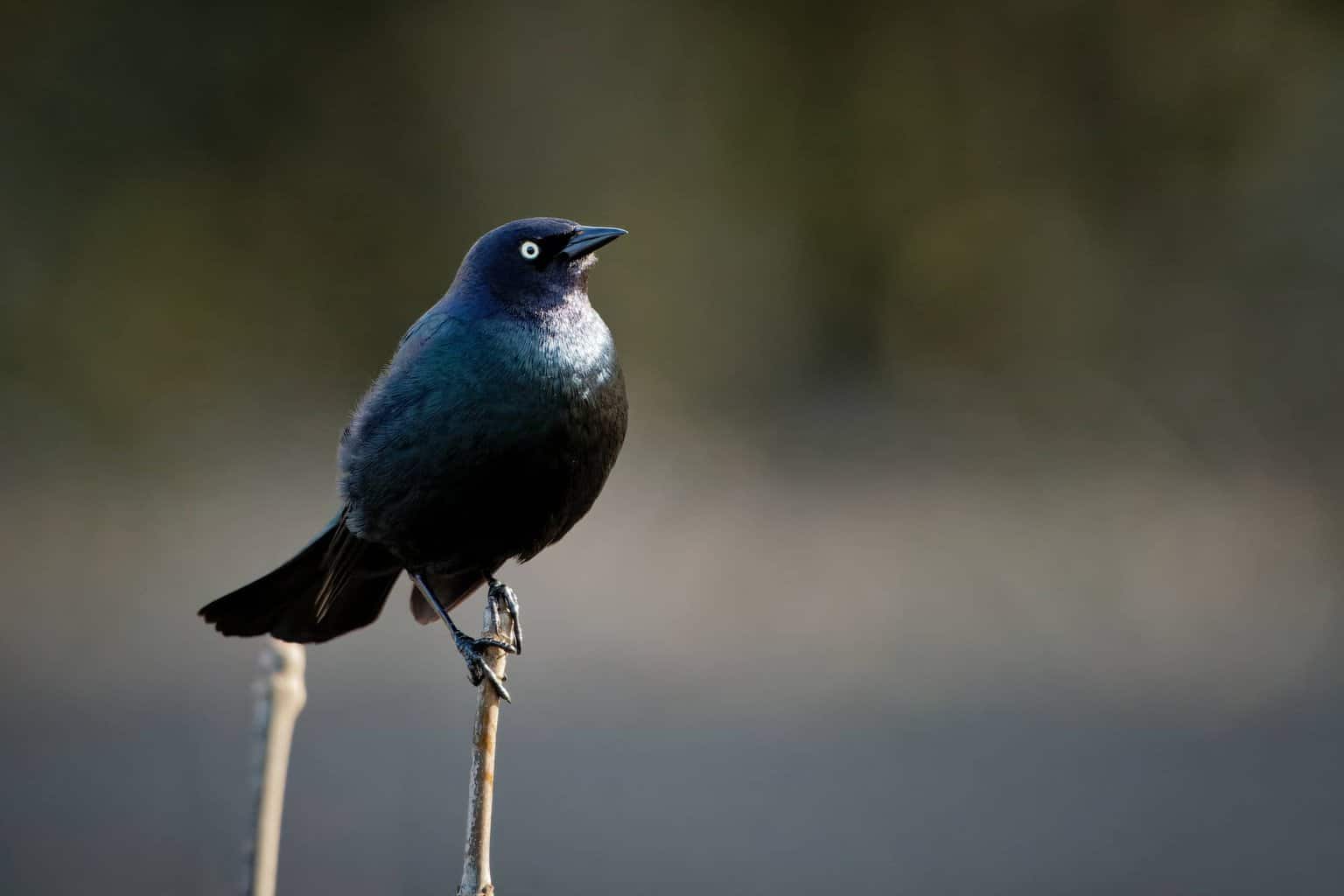
- Scientific Name: Quiscalus quiscula
- Length: 11 – 13.4 in (28 – 34 cm)
- Weight: 2.6 – 5.0 oz (74 – 142 g)
- Wingspan: 14.2 – 18.1 in (36 – 46 cm)
These blackbirds are considered to be a near-threatened species, and their numbers have diminished rapidly since the 1970s. However, the common grackle is still the second most frequently sighted blackbird in the state.
It is more commonly seen in Minnesota in summer when the birds breed here. Most will migrate south for the winter, but a few will remain here year-round.
The males of this species are black and glossy, and the females are similar but somewhat less glossy than the males.
You can tell these birds apart from other blackbirds because they are slightly taller, and have slightly longer tails.
European Starling
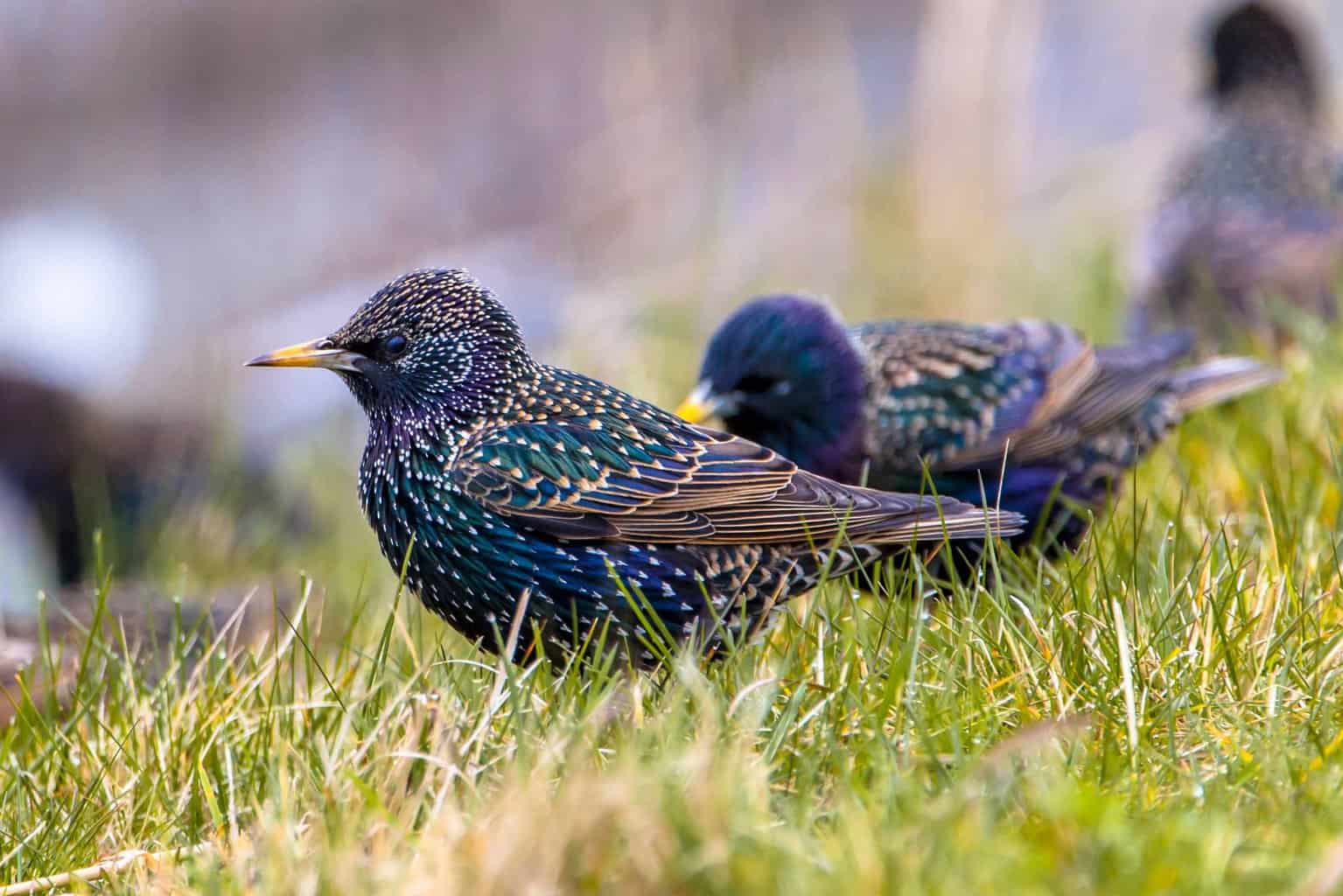
- Scientific Name: Sturnus vulgaris
- Length: 7.9 – 9.1 in (20 – 23 cm)
- Weight: 2.1 – 3.4 oz (60 – 96 g)
- Wingspan: 12.2 – 15.8 in (31 – 40 cm)
Though non-native, the European starling is also a reasonably frequent sight in Minnesota throughout the year. European starlings are now one of the most common songbirds here, as they are throughout much of North America and stay in the state year-round.
These stocky blackbirds look rather colorful up close, with iridescence in shades of purple, green, and blue. The European starling is not to be missed!
Brown-Headed Cowbird
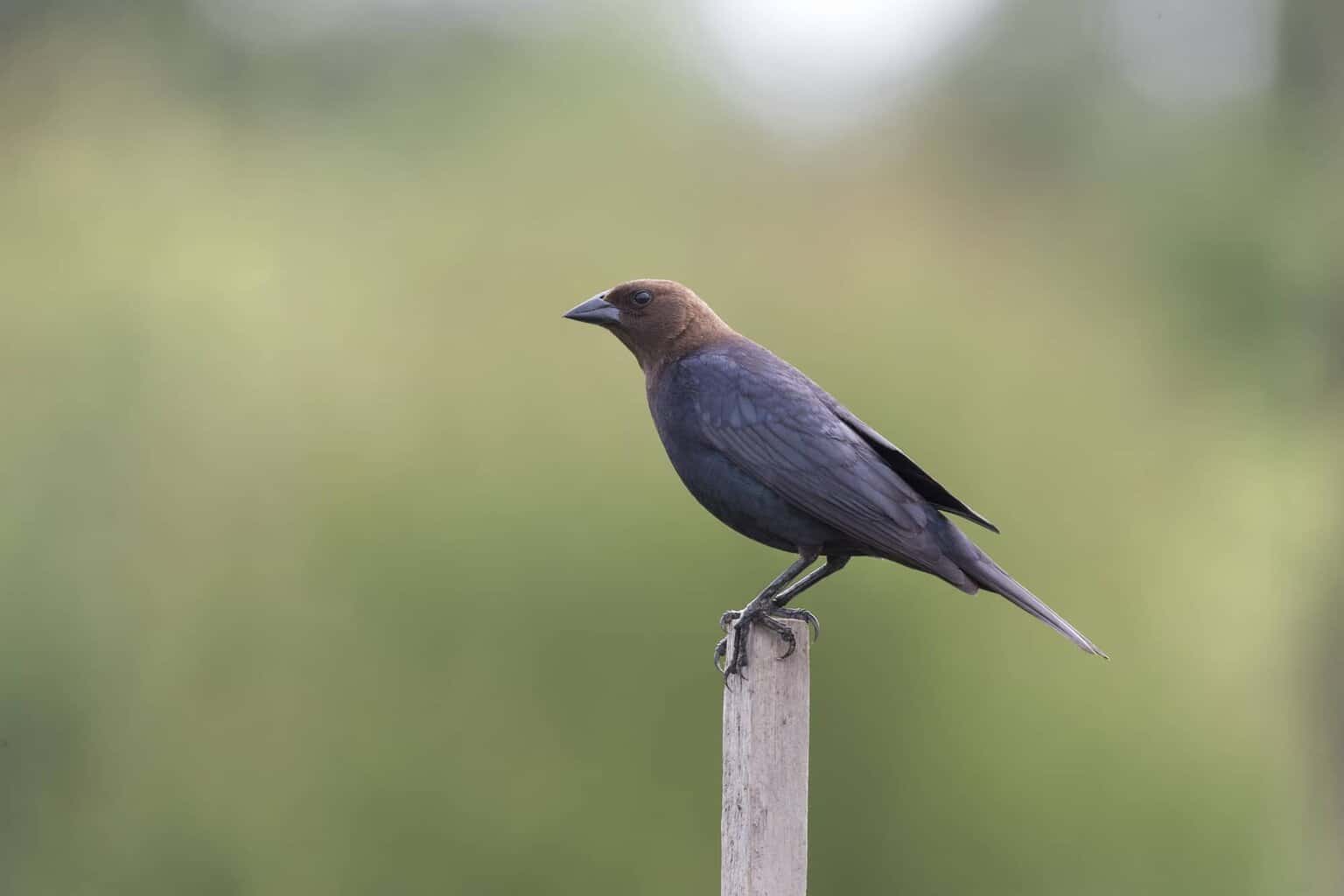
- Scientific Name: Molothrus ater
- Length: 76.3 – 8.7 in (19 – 22 cm)
- Weight: 1.3 – 1.8 oz (42 – 50 g)
- Wingspan: 14.2 in (36 cm)
Around a quarter of birdwatchers in Minnesota check this bird off on their summer birdwatching checklists. You are most likely to see them during the breeding season in nature or on your bird feeders.
Most of the time, Brown-headed cowbirds will remain in the state between March and October. However, some individuals may remain in the state year-round.
One interesting thing about these birds is that they don’t build their own nests, but hijack the nests of other birds and lay their eggs for other birds to sit and rear.
The males are black with brown heads and the females are smaller, and grey-brown with slight streaking all over.
Baltimore Oriole
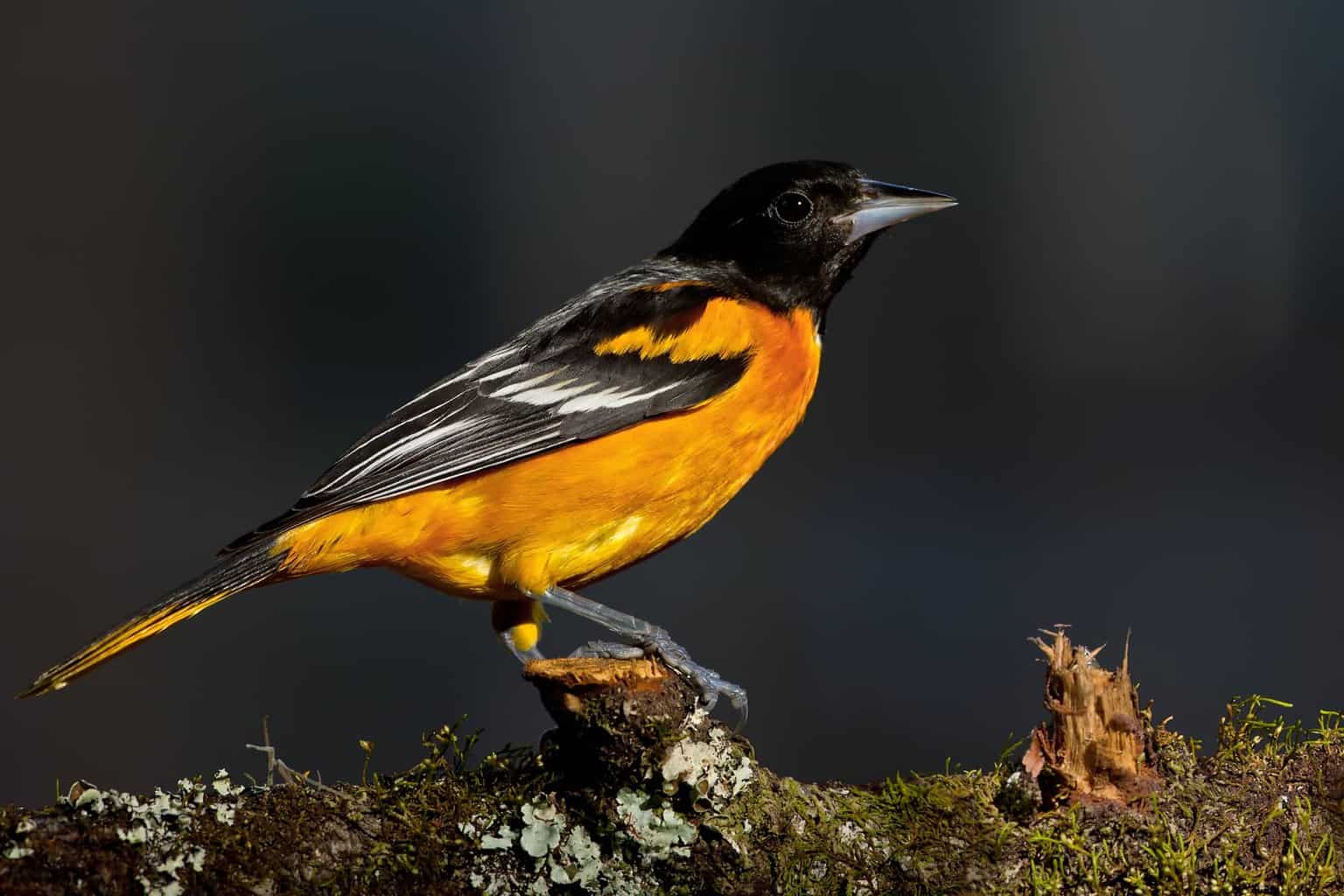
- Scientific Name: Icterus galbula
- Length: 6.7 – 7.5 in (17 – 19 cm)
- Weight: 1.1 – 1.4 oz (30 – 40 g)
- Wingspan: 9.1 – 11.8 in (23 – 30 cm)
Baltimore orioles usually arrive in around April or May and spend the breeding season in Minnesota. Some may stay as late as January but most will depart by around September.
The adult male Baltimore orioles are black and orange, with white wing bars. And the females are yellowing and gray-brown to yellow-brown.
You may be lucky enough to spot them feeding on fruit or insects in summer, often in your garden, where they help keep pest numbers down.
Yellow-Headed Blackbird
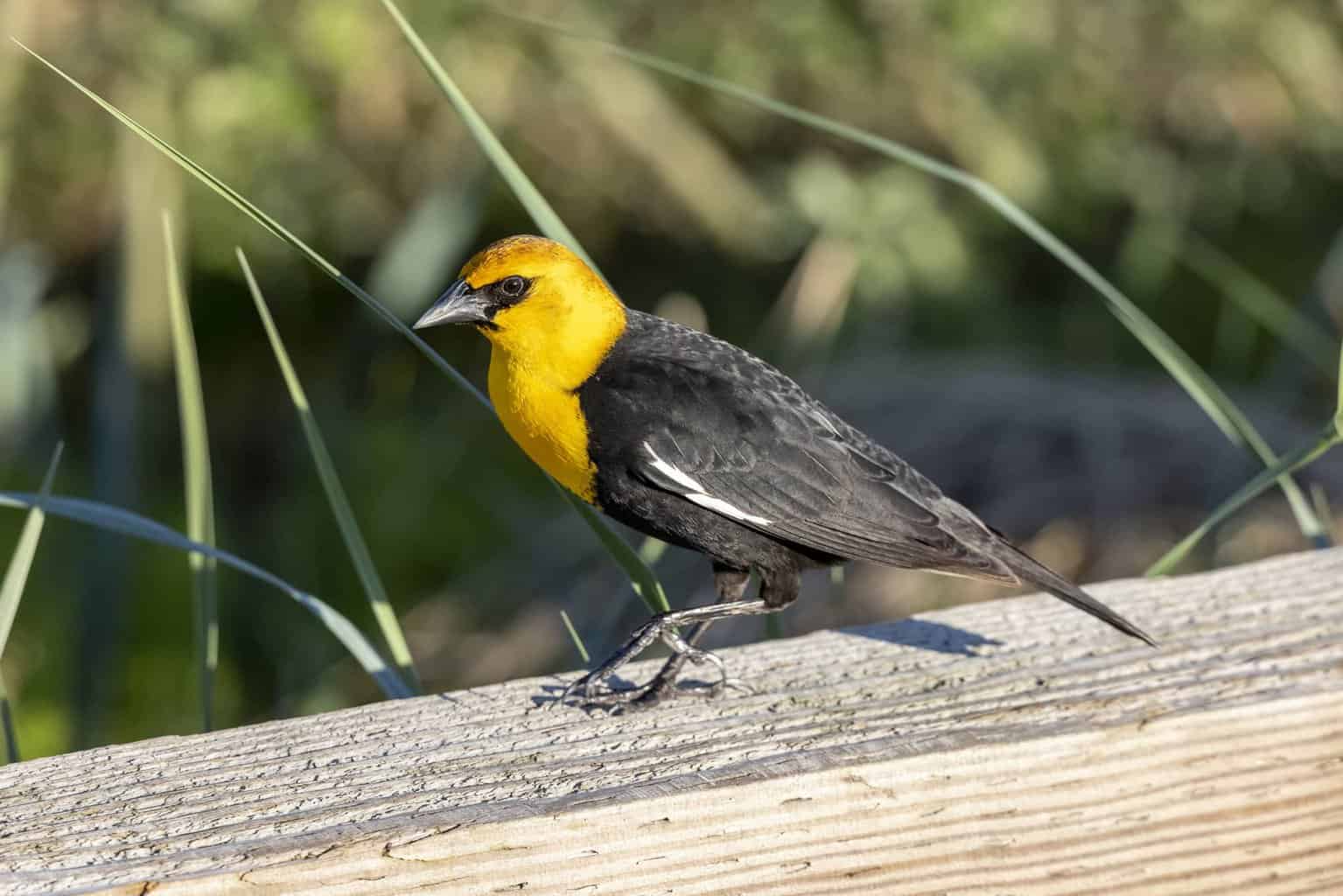
- Scientific Name: Xanthocephalus xanthocephalus
- Length: 8.3 – 10.2 in (21 – 26 cm)
- Weight: 1.6 – 3.5 oz (44 – 100 g)
- Wingspan: 16.5 – 17.3 in (42 – 44 cm)
The Yellow-headed blackbird can be seen in Minnesota and is most likely to be spotted in May or June, as they come to the state for the breeding season.
These birds are somewhat larger than the Red-winged blackbird. The males have bright yellow heads and chests, and black, glossy bodies.
While the females have duller yellow heads and brown body plumage. The juveniles also have yellow heads. Sunflower seeds will help attract them to your garden!
Eastern Meadowlark
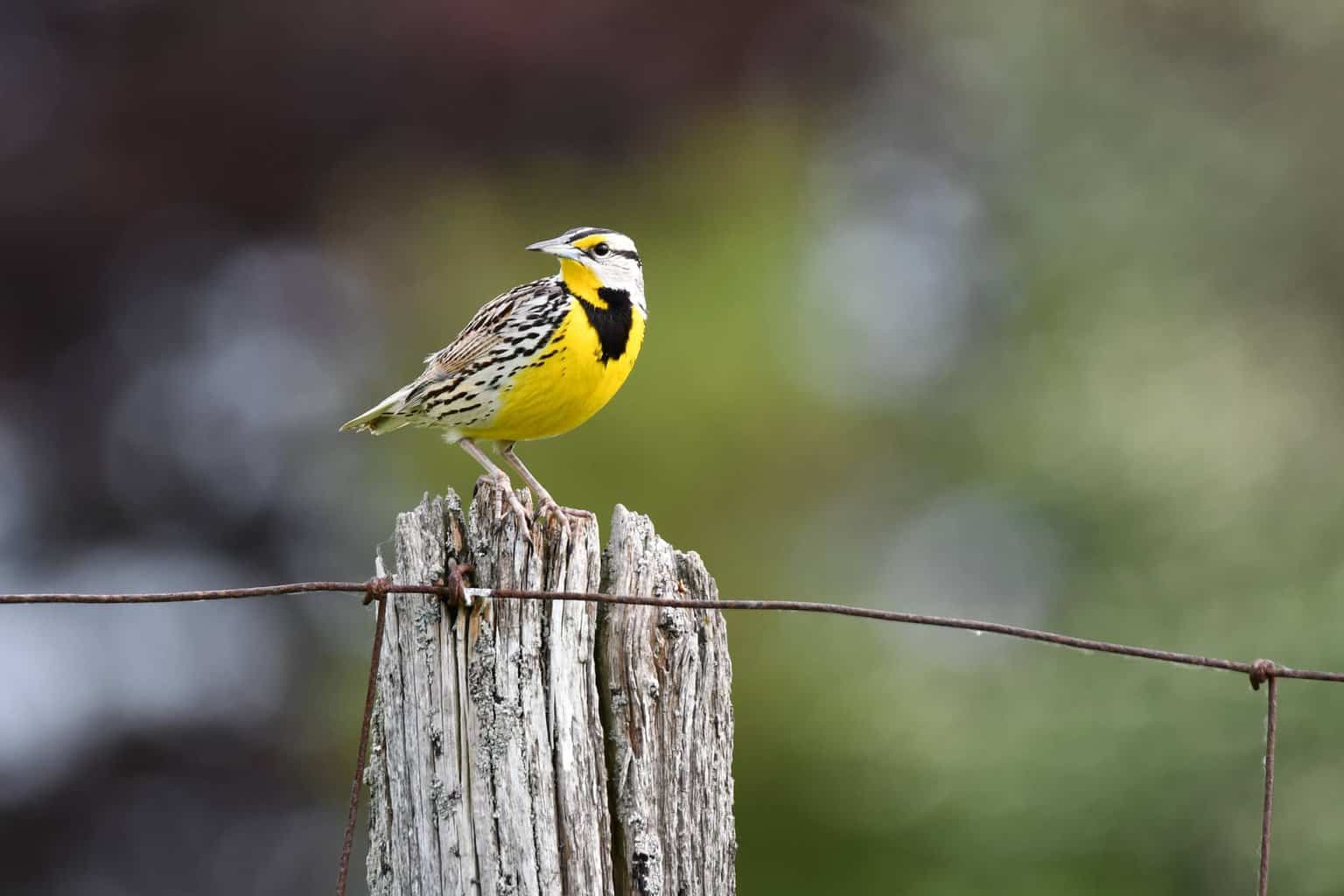
- Scientific Name: Sturnella magna
- Length: 7.5 – 10.2 in (19 – 26 cm)
- Weight: 3.2 – 5.3 oz (90 – 150 g)
- Wingspan: 13.8 – 15.8 in (35 – 40 cm)
Though they are considered a near-threatened species in Minnesota, you may be lucky enough to hear the musical song, or catch a glimpse of one of these songbirds in your area.
These birds arrive in Minnesota in March and can stay as late as January. But you are most likely to spot them in the state between April and October.
These medium-sized blackbirds have vivid yellow bellies with a black band across the chest and brown and black backs. They are well known for their clear and musical songs.
Bobolink
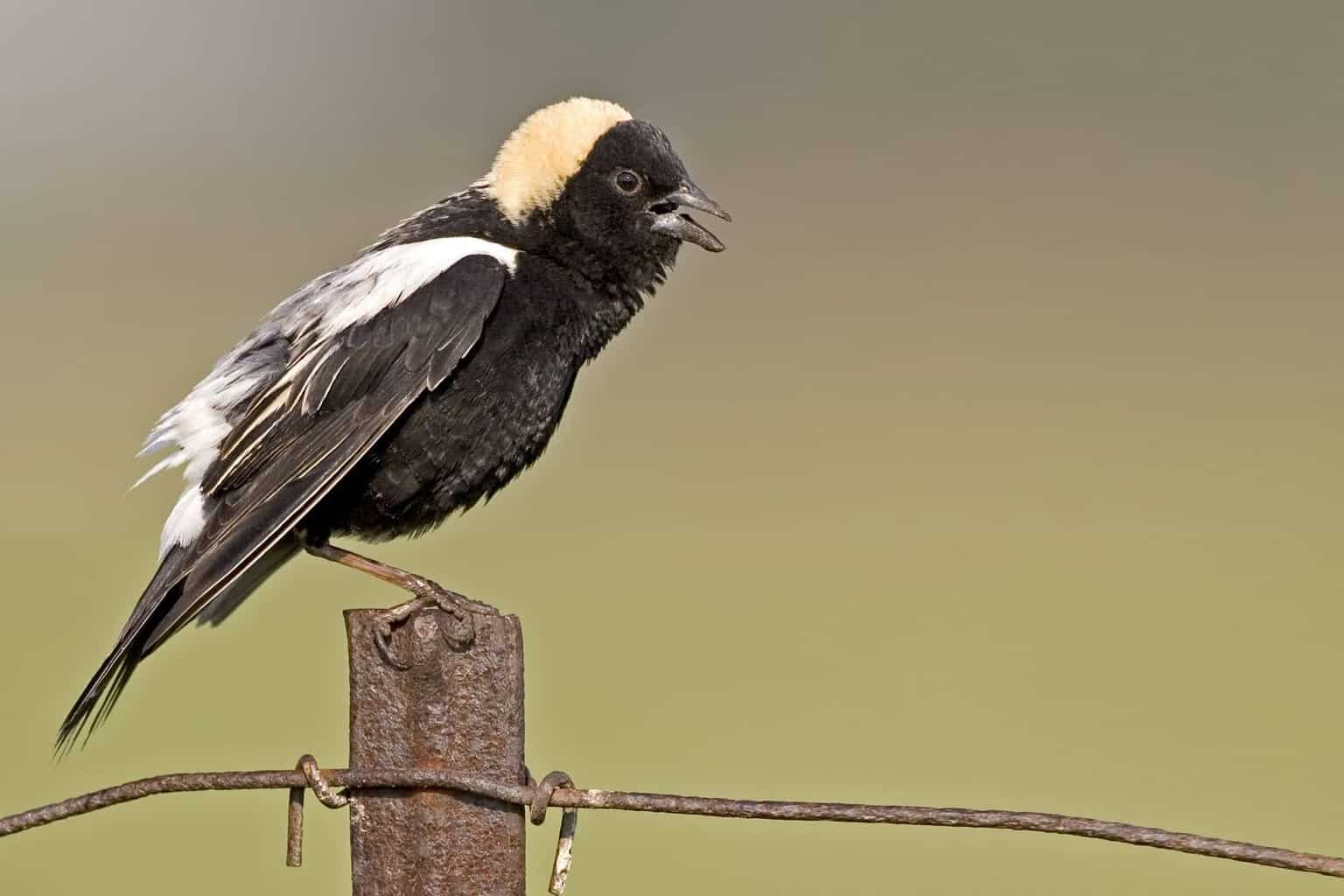
- Scientific Name: Dolichonyx oryzivorus
- Length: 5.9 – 8.3 in (15 – 21 cm)
- Weight: 1.0 – 2.0 oz (29 – 56 g)
- Wingspan: 10.6 in (27 cm)
Bobolinks may be spotted throughout the breeding season in Minnesota. However, they are most commonly spotted in June.
As the breeding season begins, the males become very unusual looking and distinctive, with flashes of a yellow patch of ‘hair’ on the backs of their heads, black bellies, and white backs.
When not in their breeding plumage, they look like females, with brown and streaked feathers, black lines around their eyes, and stripes on top of their heads.
Western Meadowlark
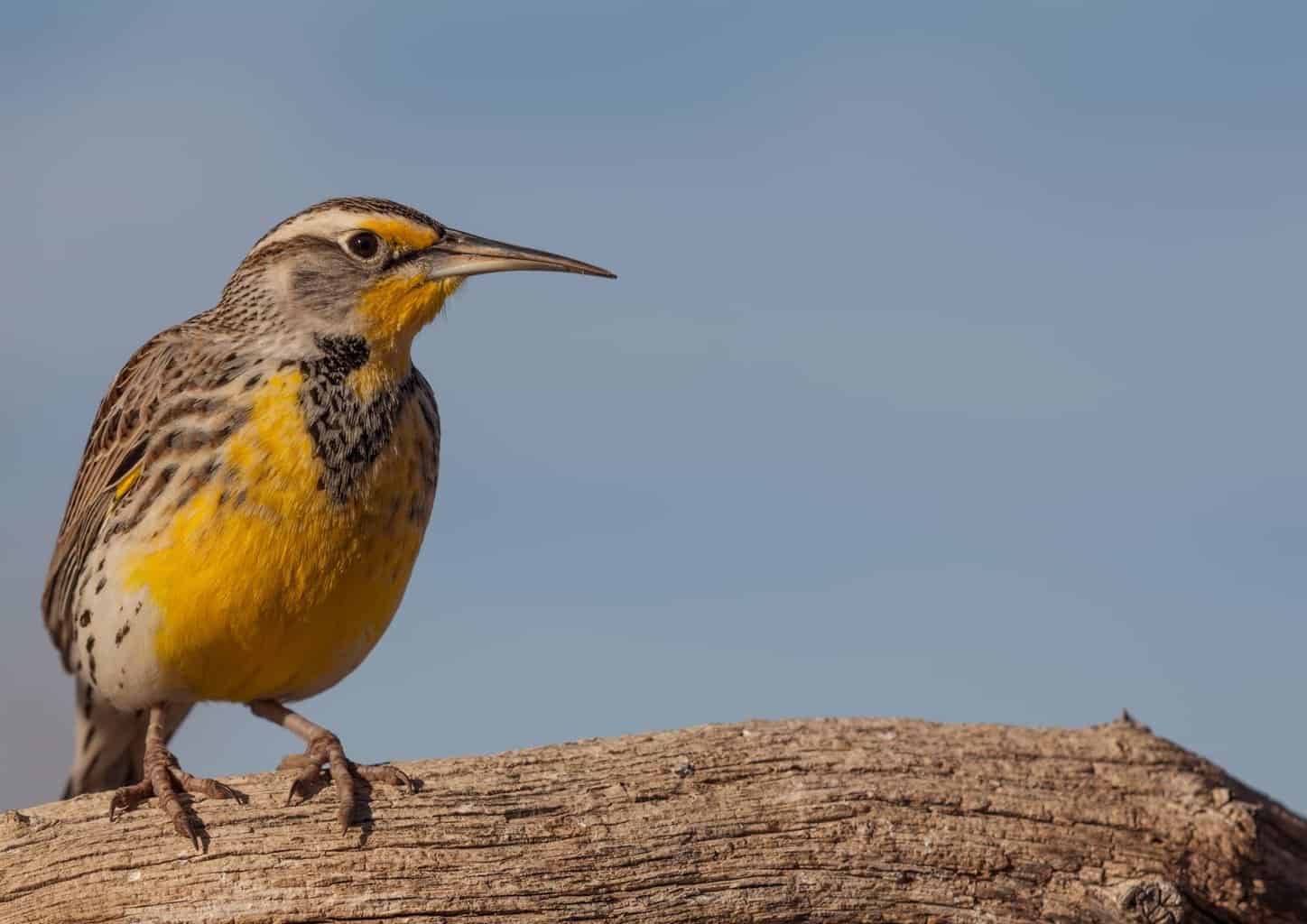
- Scientific Name: Sturnella neglecta
- Length: 6.3 – 10.2 in (16 – 26 cm)
- Weight: 3.1 – 4.1 oz (89 – 115 g)
- Wingspan: 16.1 in (41 cm)
Though they are not commonly seen in Minnesota, Western Meadowlarks are recognized to occur regularly in the state.
You are most likely to encounter them here between March and October, but can rarely be spotted here year-round. Most, however, will migrate south for the winter.
Like Eastern Meadowlarks, these birds also have bright yellow bellies and a cheerful, musical song. They have V-shaped black bands across their chests.
Orchard Oriole
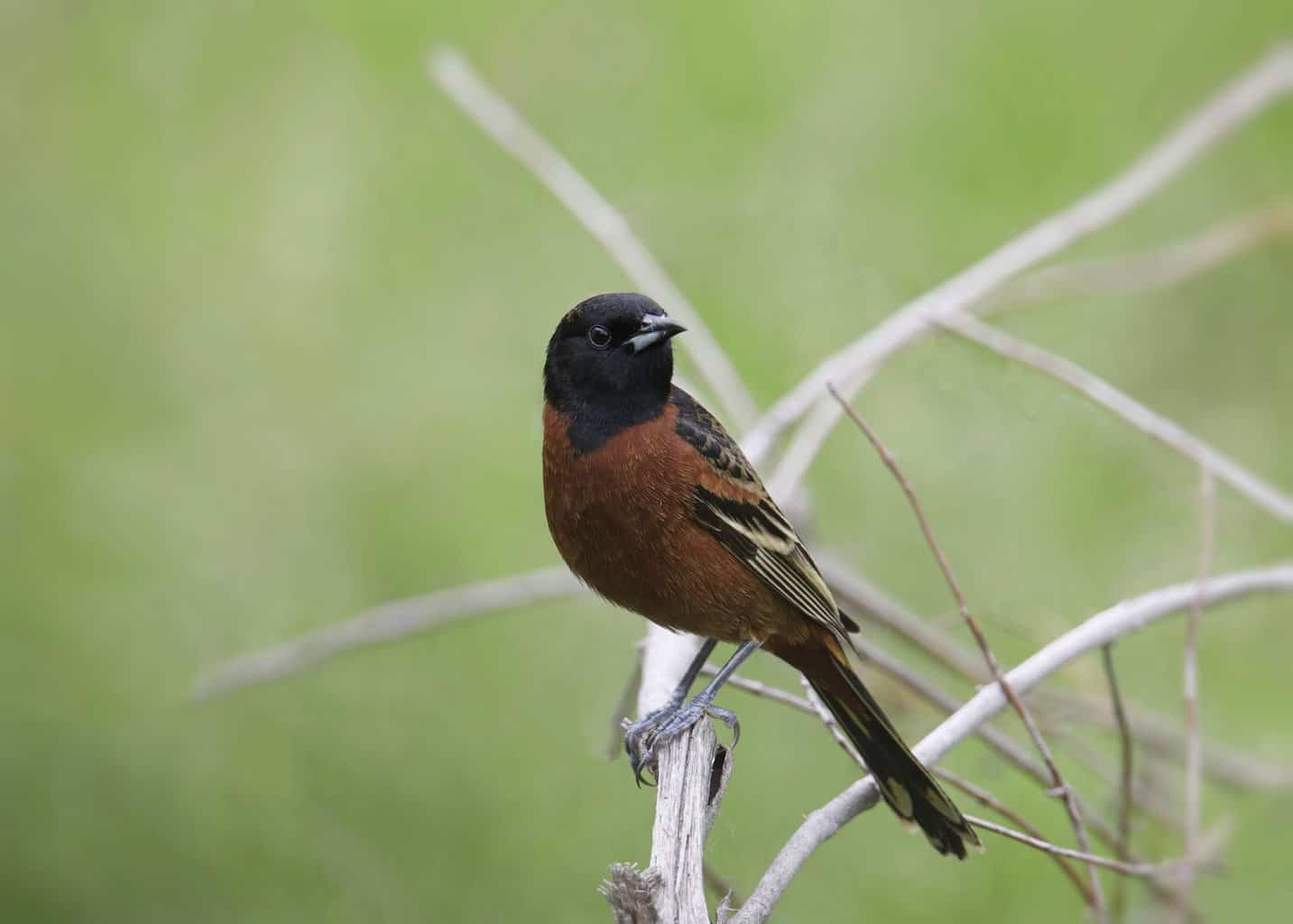
- Scientific Name: Icterus spurius
- Length: 5.9 – 7.1 in (15 – 18 cm)
- Weight: 0.6 – 1.0 oz (16 – 28 g)
- Wingspan: 9.8 in (25 cm)
Orchard orioles have been spotted in Minnesota over the summer months, between May and August. They overwinter further to the south.
The males and females are strikingly different. The males are black and red, while the females are a greenish-yellow hue with darker wing coloration and white wing bars.
Rusty Blackbird

- Scientific Name: Euphagus carolinus
- Length: 8.3 – 9.8 in (21 – 25 cm)
- Weight: 1.7 – 2.8 oz (47 – 80 g)
- Wingspan: 14.6 in (37 cm)
Rusty blackbirds can be seen in Minnesota during their migrations in spring and fall.
Though some remain here from August through to June, most pass through, and you are most likely to spot them here in March/April or October/November.
Sadly, these birds are far, far less common than they once were. Their numbers may have declined by up to 99% in the past 40 years or so.
Brewer’s Blackbird
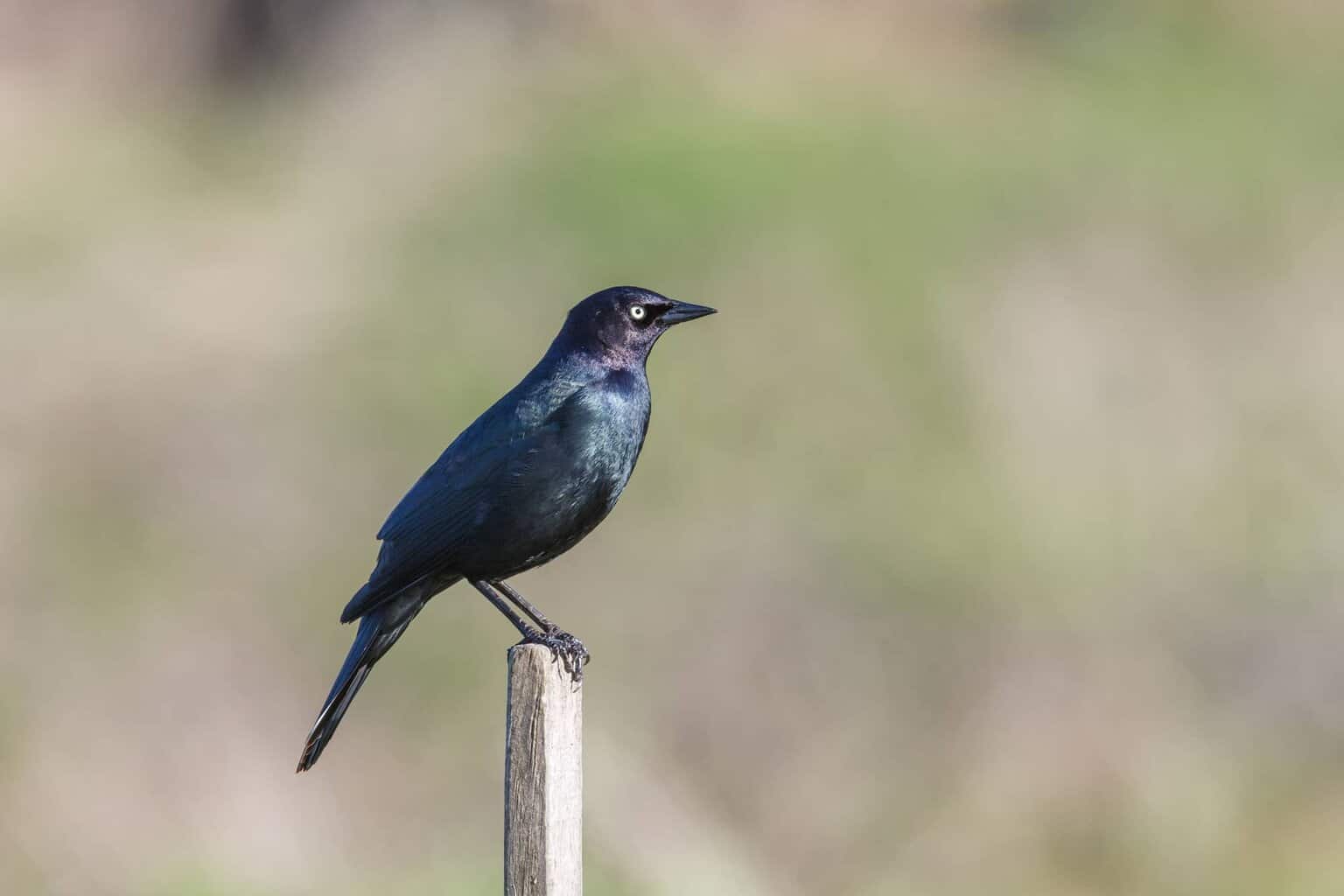
- Scientific Name: Euphagus cyanocephalus
- Length: 7.9 – 9.8 in (20 – 25 cm)
- Weight: 1.8 – 3.0 oz (50 – 86 g)
- Wingspan: 14.6 in (37 cm)
Brewer’s blackbirds are not frequently spotted in Minnesota. However, they may be seen here throughout the year, and are recognized as regularly occurring in the state.
You are most likely to see them between May and July when most sightings are reported.
The males are black and glossy, with purple sheen on their heads and greenish sheen on their bodies. The females are a duller brown.
Great-Tailed Grackle
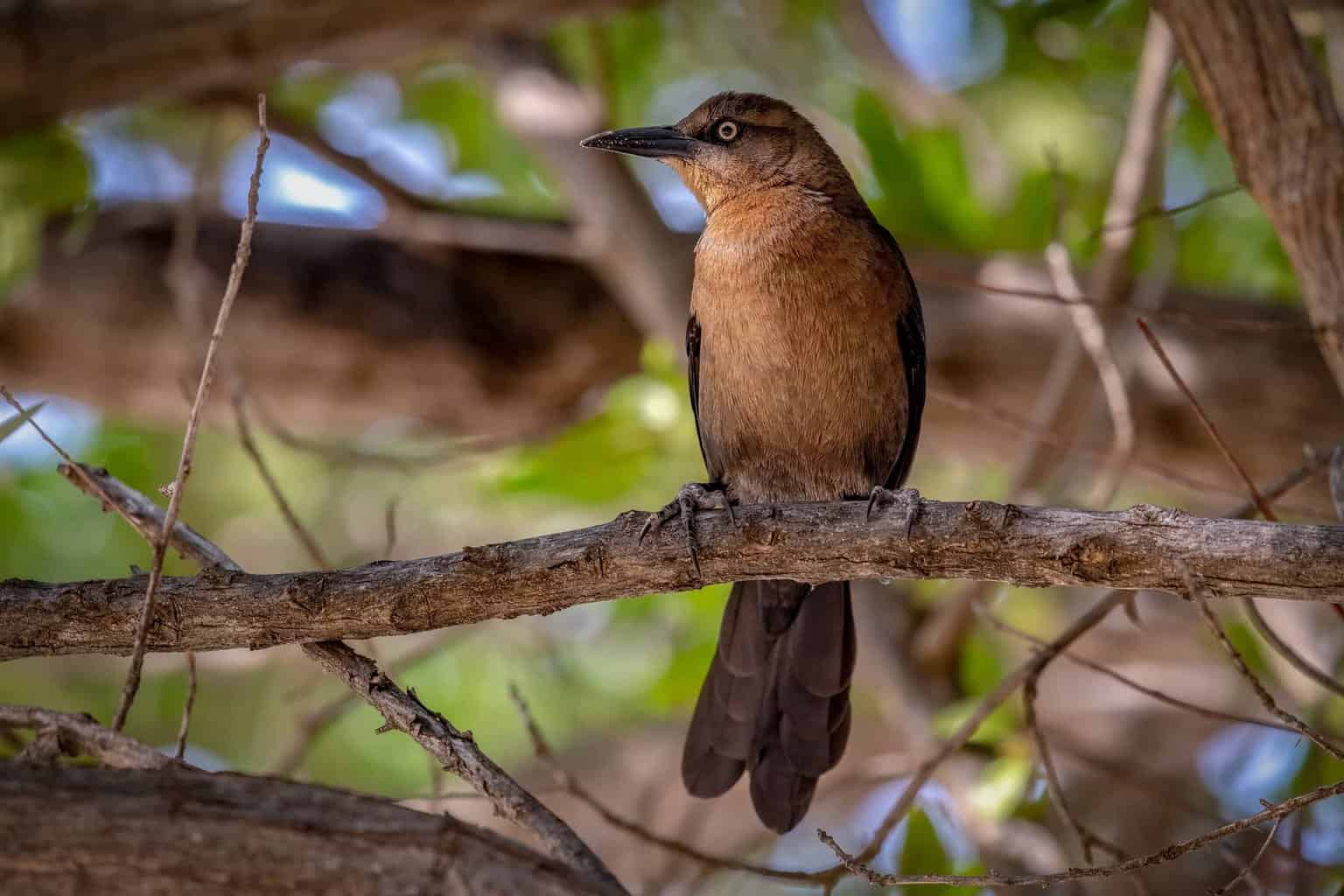
- Scientific Name: Quiscalus mexicanus
- Length: 15.0 – 18.1 in (38 – 46 cm)
- Weight: 3.7 – 6.7 oz (105 – 190 g)
- Wingspan: 18.9 – 22.8 in (48 – 58 cm)
You are unlikely to spot the Great-tailed grackle in Minnesota. However, they are recognized as occurring regularly in the south of the state all year round.
These are long and slender blackbirds. The males have long, tapered tails, and are iridescent black with striking yellow eyes.
The females have a dark brown back and a lighter brown body underneath. They have slightly narrower tails.
Final Thoughts
The above blackbird species are those you are most likely to see in Minnesota. However, there are recorded sightings of accidental visitors, Bullock’s oriole and Scott’s oriole, in this state.

